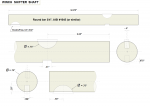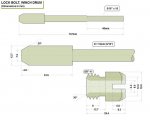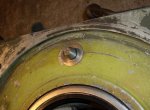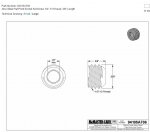....one pic only....?

more than one attached, below; incl. parts needed for a "groove-less-shaft" modification.... Many more pics available!
That fork may need some heating and careful sideways hitting with a soft punch, to get it to slide off; most often it is the shaft "grew" (got deformed) around the woodruff key, from abuse like hammering on the lever to disengage, etc....
Regarding (in)sufficient lubrication of all parts inside the clutch housing....:
Sadly it seems to be a very common problem to find shift shaft & fork, sliding dog clutch, end-bushing, etc. - everything in there gets rusty!
My explanation: it simply happens because there is nothing inside there spinning and picking up that little oil from the bottom to keep distributed to the critical areas - except for the natural property of oil to creep all around, IF it wasn't hindered by moisture and water condensation on said parts, mainly in the upper areas! One trick to help keep the drum shaft & bushings plus all other parts "wet", on the clutch side: pour at least one cup of oil INTO the drum before final assembly! And operate the winch from time to time, of course!
I have rebuilt many winches, but found only one so far (prob. an early model ?) which has a drum that is built differently: on the clutch side, in between the dogs it has two large openings, so that both cavities are communicated. That means that oil can easily get from the drum into the clutch housing and vice-versa. Coincidentally all parts inside that clutch housing looked brand new and the drum shaft end had not one stain...!
G.


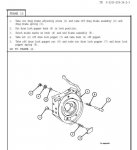

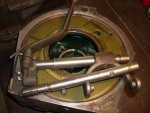
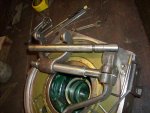
![DSCI0004 (2) [HDTV (720)].jpg](/data/attachments/218/218378-ac6b86f2e2803e084efd6da6e9ea6ed5.jpg)
![DSCI0001 (2) [HDTV (720)].jpg](/data/attachments/218/218379-f8e2278284dead14b040b084c9401b2c.jpg)
